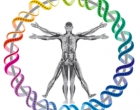
Earlier this year, the Nobel prize for medicine was awarded to three scientists who have made enormous contributions to research into tropical diseases. Hailed as “heroes in the truest sense of the word”, they have made ground-breaking discoveries in therapies for malaria and parasitic worm infections, leading to the treatment of diseases affecting more than 3.4 billion people around the world.
Asymptomatic reservoir of malaria, and treatment of malaria in pregnancy
Tropical diseases such as these were the topic of the 64th ASTMH conference in Philadelphia, which BMC Medicine attended recently. Malaria was one of the main topics of conversation, with experts from around the world discussing ways in which elimination might be achieved in a low transmission setting.
Arjen Dondorp gave an excellent presentation on the sub-clinical reservoir of malaria infection, explaining that although those symptomatic individuals have a higher likelihood of transmissibility to the mosquito vectors, asymptomatic individuals will carry the infection for longer.
Although mass drug administration seems to be effective, there are concerns that the one year follow up to test for effectiveness might not be long enough, and that importation of infected individuals from outside sources may be a major Achilles heel.
Although mass drug administration seems to be effective, there are concerns that the one year follow up to test for effectiveness might not be long enough, and that importation of infected individuals from outside sources may be a major Achilles heel. These issues have been touched upon in a forum article we published earlier this year.
Another excellent malaria session was on the topic of the potential effects of artemisinin derivatives in early pregnancy. Artemisinin-based combination therapies are not currently recommended in pregnancy because pre-clinical animal studies have indicated that the artemisinin derivatives were embryotoxic and potentially teratogenic.
Trials in humans looking to assess the efficacy of these drugs in pregnancy therefore exclude pregnant women, which has had implications for generating evidence-based recommendations for the prevention and treatment of malaria in this population.
However, Rose McGready and Stephanie Dellicour, using robust observational datasets from Asia and Africa respectively, compared adverse pregnancy outcomes in women treated with artemisinin derivatives versus those treated with the recommended therapy of quinine. They showed that use of artemisinin derivatives did not increase the risk of adverse pregnancy outcome, which has implications for drug policy and recommendations.
Counterfeit drugs
Of course, treatment of diseases by drugs is the mainstay of medicine. However, how are we to be sure that the drugs that are used are real, effective and safe? Worryingly, counterfeit drugs have been detected in the legitimate supply chain, even penetrating the legitimate supply chain in the U.S.A.
How are we to be sure that the drugs that are used are real, effective and safe?
Tim Mackey, who has also written an Opinion piece on this issue, discussed the harms of such drugs, which, as well as causing injury, also impact on drug resistance. He highlighted the challenges regarding global surveillance of counterfeit drugs, noting that non-reporting of these issues is frequent, and currently, no global database exists.
Paul Newton followed this session with a discussion on how poor quality medicines, either due to counterfeiting or degradation, might impact on the results and interpretation of clinical trials. He recommended that repeat assays for drugs quality should be performed at regular intervals across the trial, and that any instances of counterfeit drug detections should be reported to the WHO Rapid Alert Committee.
Challenges after the Ebola outbreak
Symposia on the recent Ebola epidemic in west Africa prompted many thought-provoking debates. Daniel Bausch discussed post-acute Ebola health sequelae, particularly relevant following news from October that Pauline Cafferkey, the British nurse who contracted Ebola in west Africa, suffered life-threatening meningitis nine months after initial acute infection.
Prof Bausch explained that the pathogenesis underlying these sequelae were still unclear, but hypothesized that these could be due to sustained immune activation and delayed virus clearance. This has implications for transmission as well as surveillance: recent studies have shown that the Ebola virus can linger in the eye and the semen for months after initial infection, but the risk this poses for transmission is still unclear.
Overall, presentations at ASTMH 2015 highlighted the enormous progress made in the tropical medicine field, and also raised awareness about the challenges that lie ahead, while proposing ways in which to overcome these barriers.
BMC Medicine will be launching a new article collection in late 2016, Medicines and the Future of Health, in collaboration with the Journal of Pharmaceutical Policy and Practice (JoPPP). This collection will cover recent advances in drug and diagnostics development, precision medicine, medicines use, policy and access, that have both broad interest and high clinical and public health relevance due to their impact on the future of health.
If you have any research you would like us to consider for inclusion in our Medicines and the Future of Health collection, please email the journal at bmcmedicineeditorial@biomedcentral.com.

BMC Medicine: passionate about quality, transparency and clinical impact
2014 median turnover times: initial decision three days; decision after peer review 41 days
Comments